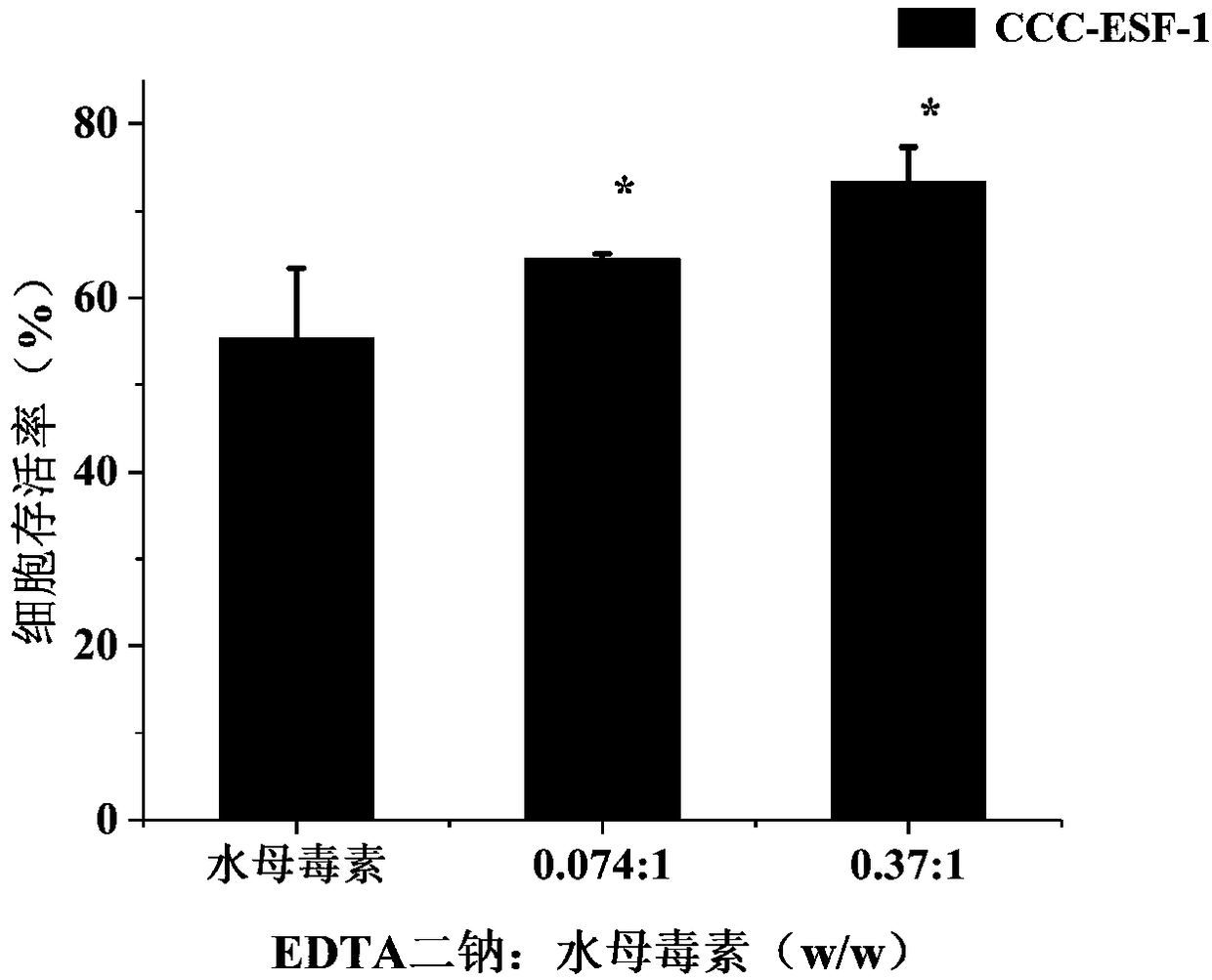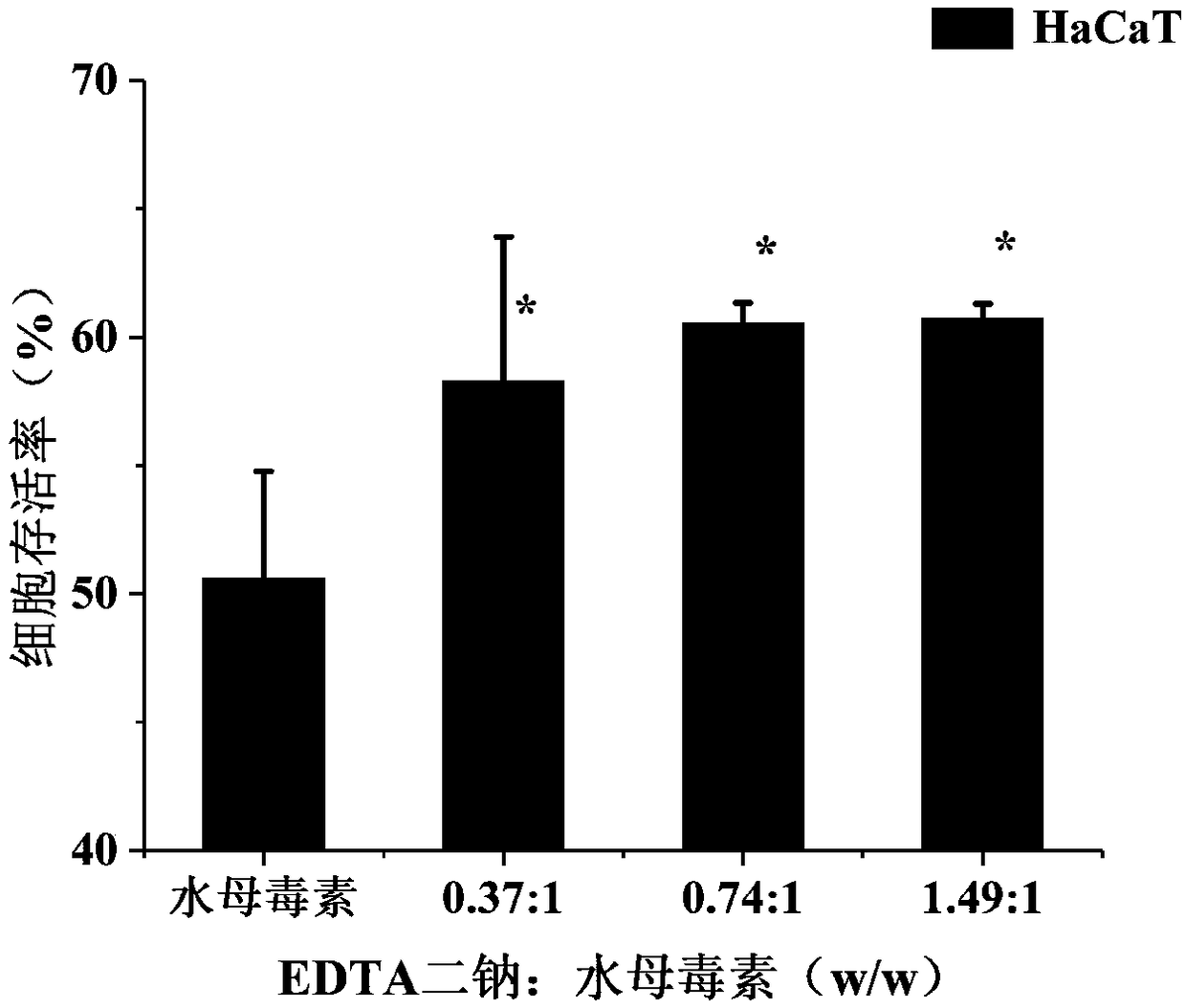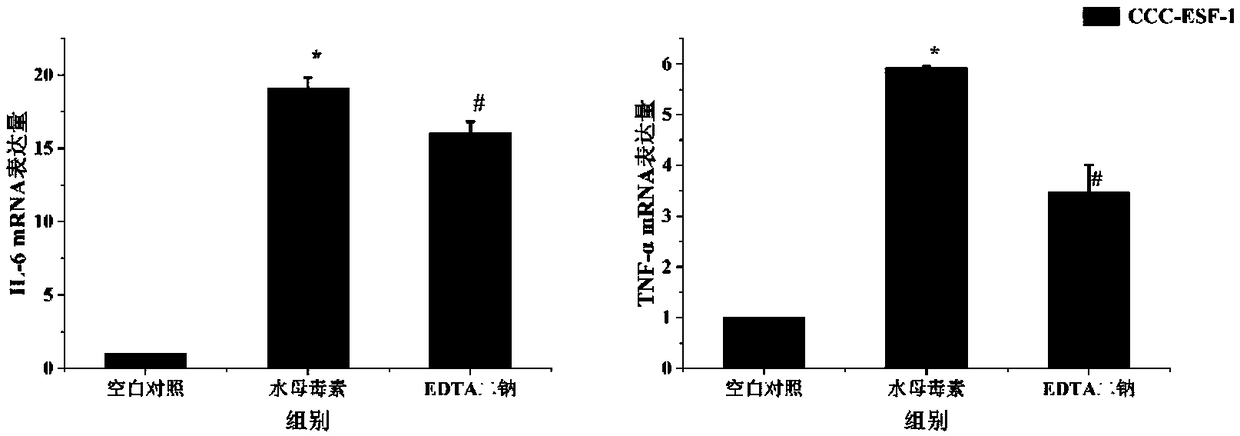Application of disodium ethylenediamine tetraacetate as drug for treating jellyfish dermatitis
A technology for jellyfish and dermatitis, which is applied in the direction of drug combinations, medical preparations containing active ingredients, antipyretics, etc. It can solve the problems of exacerbation of the disease and poor effect, and achieve the effect of broadening the scope of application
- Summary
- Abstract
- Description
- Claims
- Application Information
AI Technical Summary
Problems solved by technology
Method used
Image
Examples
Embodiment 1
[0033] Take the above-mentioned 10 μM EDTA disodium solution and 50 μg / mL jellyfish toxin in a volume ratio of 1:1, mix evenly, react at 37°C for 30 minutes, and use it as the mixed solution A for use;
[0034] To the plated with 100 μl 1 x 10 5 Add 100 μL of mixed solution A and 100 μL of mixed solution of jellyfish toxin and cell culture medium (control) in a volume ratio of 1:1 to a 96-well plate of human embryonic fibroblast cells (CCC-ESF-1) cells / mL and 100 μL of cell culture medium (blank), after 24 hours of reaction, remove the supernatant, add MTT after 4 hours of reaction, add stop solution, and measure A with a microplate reader within 24 hours 490nm , the reaction was set up in three parallels, and the cell viability was calculated according to the following formula.
[0035]
[0036] The experimental results show (see figure 1), when the mass ratio of disodium EDTA to jellyfish toxin (calculated as protein) was 0.074:1, the survival rates of cells were 64.23...
Embodiment 2
[0038] Take 50 μM EDTA disodium solution and 50 μg / mL jellyfish toxin and mix evenly according to the volume ratio of 1:1, and react at 37°C for 30 minutes, and use it as the mixed solution B for later use;
[0039] To the plated with 100 μl 1 x 10 5 Add 100 μL of mixed solution B and 100 μL of mixed solution of jellyfish toxin and cell culture medium (control) in a volume ratio of 1:1 to a 96-well plate of human embryonic fibroblast cells (CCC-ESF-1) cells / mL and 100 μL of cell culture medium (blank), after reacting for 24 hours, remove the supernatant, add MTT and react for 4 hours, add stop solution, and measure A with a microplate reader within 24 hours 490nm , the reaction was set up in three parallels, and the cell viability was calculated according to the following formula.
[0040]
[0041] The experimental results show (see figure 1 ), when the mass ratio of EDTA disodium to jellyfish toxin (calculated as protein) was 0.37:1, the cell survival rates were 75.41%,...
Embodiment 3
[0043] Take 50 μM EDTA disodium solution and 50 μg / mL jellyfish toxin and mix evenly according to the volume ratio of 1:1, and react at 37°C for 30 minutes, and use it as the mixed solution B for later use;
[0044] To the plated with 100 μl 1 x 10 5 Add 100 μL of mixed solution B, 100 μL of mixed solution of jellyfish toxin and cell culture medium (control) mixed at a volume ratio of 1:1 to a 96-well plate of human keratinocytes (HaCaT) cells / mL, and 100 μL of cell culture Base (blank), after 24 hours of reaction, remove the supernatant, add MTT after 4 hours of reaction, add stop solution, measure A with a microplate reader within 24 hours 490nm , the reaction was set up in three parallels, and the cell viability was calculated according to the following formula.
[0045]
[0046] The experimental results show (see figure 2 ), when the mass ratio of disodium EDTA and jellyfish toxin (calculated as protein) was 0.37:1, the survival rates of cells were 56.81%, 53.52%, 64...
PUM
 Login to View More
Login to View More Abstract
Description
Claims
Application Information
 Login to View More
Login to View More - R&D
- Intellectual Property
- Life Sciences
- Materials
- Tech Scout
- Unparalleled Data Quality
- Higher Quality Content
- 60% Fewer Hallucinations
Browse by: Latest US Patents, China's latest patents, Technical Efficacy Thesaurus, Application Domain, Technology Topic, Popular Technical Reports.
© 2025 PatSnap. All rights reserved.Legal|Privacy policy|Modern Slavery Act Transparency Statement|Sitemap|About US| Contact US: help@patsnap.com



